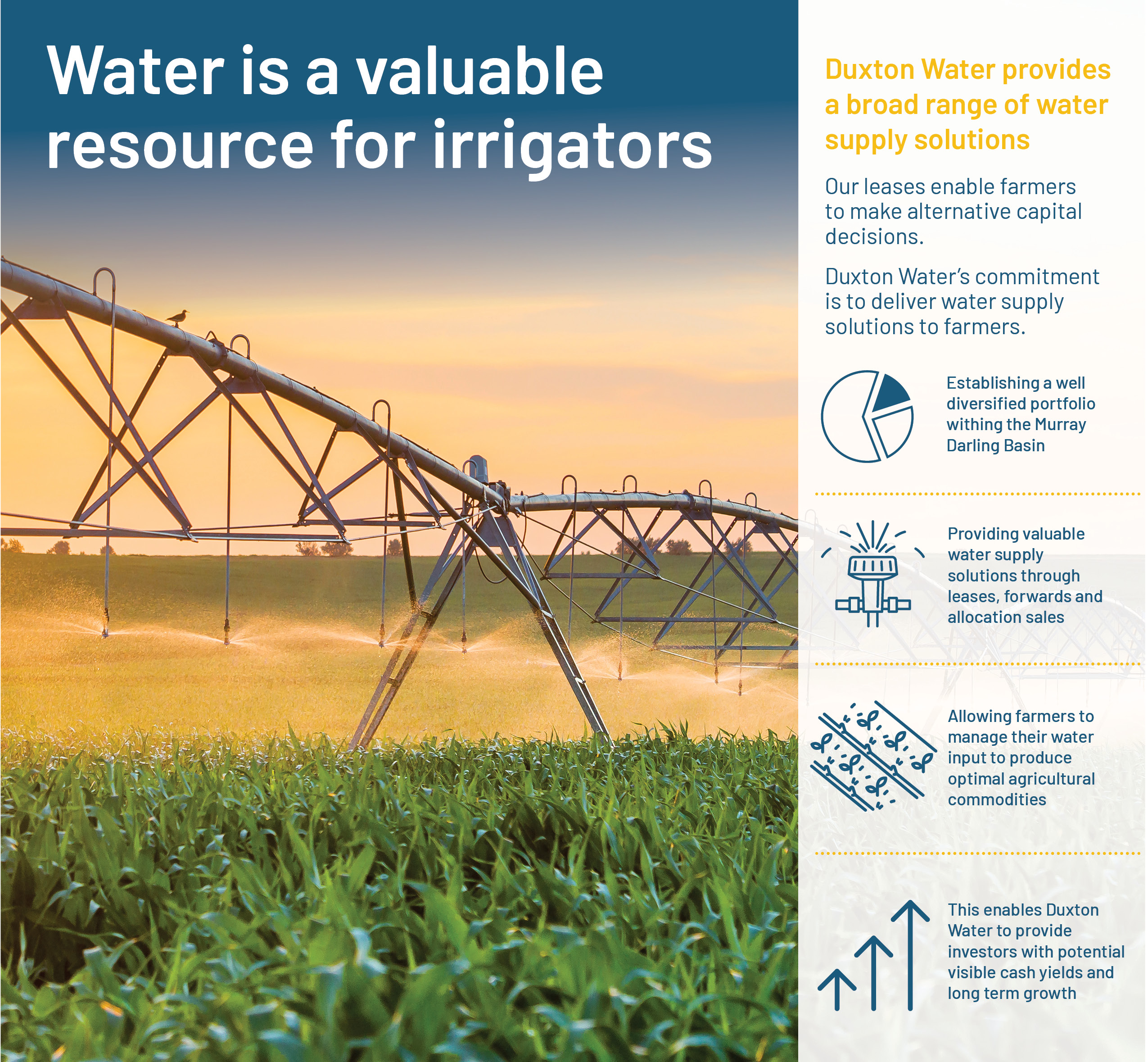
Duxton Water owns and actively manages a diverse portfolio of water assets, primarily located in the Southern Murray Darling Basin (”SMDB”) region of Australia. In order to meet the needs of the irrigative community, the team at Duxton Water take a holistic approach to providing the irrigator with as much or as little assistance as they need with determining their optimal supply strategy.
This often comprises a mix of different products which is dependent on the individual irrigator’s risk profile, and capital vs operational expense preferences. With the maturation of the Australian water market, there are now different water products available to irrigators.
Water users can therefore take varying approaches to their water management and risk mitigation strategies.
Animation Transcript
In the past, irrigators received a permit to access water based on their plantings; permanent crops like vines or nut trees needed a higher security of supply than annual growers who could scale their production up or down each year dependent on the available resource. In the 1990s, it was realised that further issue of water permits was not sustainable, so a cap was placed on the further issuance. To allow water-users to continue to develop, grow and change their production, the Government developed a trade capability, by recognising the permit as a perpetual right to the resource, and by separating this asset from the land. So, one can own water without land and land without water.
Today these rights are called water entitlements; these are a perpetual right to a particular volume of water. Each year, the entitlement holder receives an allocation based on their entitlement and its particular characteristics. In some years it may be a full allocation (i.e. they receive 100% of their entitlement) and in other years it may be as low as 0% for some entitlements. Exchange platforms and brokers were introduced to facilitate trade of these two assets; entitlements, and the annual usable volume of water (allocation).
